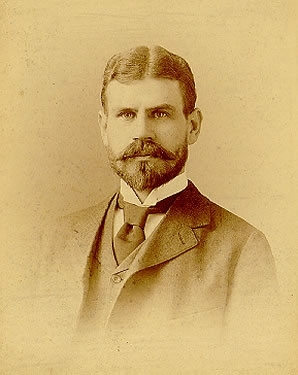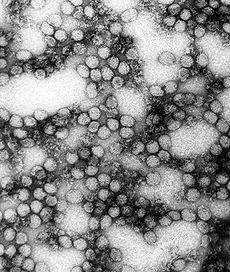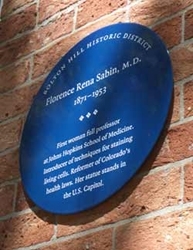 |
| Portrait of Jesse WIlliam Lazear (http://www.hsl.virginia.edu/historical/medical_history/yellow_fever/commission.cfm (University of Virginia)) |
"I think I am on the track of the real germ". These were the words of Jesse William Lazear after finding a link between mosquitoes and the dangerous yellow fever, an affliction known to attack the liver, cause hemorrhagic fevers, jaundice and was declared one of the most dangerous diseases in the 19th century.
The year was 1866, and Jesse Lazear was born in Baltimore County, Maryland. He graduated from the John Hopkins University in 1889 and received his M.D. from Columbia University in 1892. He got married in 1896 and had a son and a daughter. Soon, he began working for the US Army Yellow Fever Commission.
 |
| Yellow Fever Virus (http://en.wikipedia.org/wiki/Yellow_fever (A TEM Micrograph Image)) |
Aristides Agramonte, a colleague of his, described him as "The type of the old southern gentleman, kind, affectionate, dignified, with a high sense of honor, a staunch friend and a faithful soldier". Lazear received permission to begin growing mosquitoes from Carlos Findlay to carry out his experiments. Some brave souls volunteered to be bitten by a mosquito which contained the blood of an infected person. The volunteers came down with the yellow fever. Jesse Lazear saw this link and conducted further research.
Lazear died of the yellow fever on September 25th 1900, aged 34. Although exactly why he had contracted the disease in the first place was unclear, his notes indicated that he had experimented on himself with mosquitoes to prove that they spread the yellow fever. The YFB created Camp Lazear to commemorate him, where the link between mosquitoes and the yellow fever would be researched. lead to the identification of mosquitos as the source of the spread of the disease."
 |
| John Hopkins University Lazear Memorial (http://www.boltonhill.org/neighborhood/n_plaque.html (Bolton Hill Neighborhood)) |
Lazear's children never knew him, but they grew up in a world free of the yellow fever disease. Head of the Yellow Fever Board, Walter Reed said, "He was a splendid, brave fellow, and I lament his loss more than words can tell; but his death was not in vain. His name will live in the history of those who have benefited humanity." A brass plaque has been created in memory of him at John Hopkins University. It says: "With more than the courage and devotion of the soldier, he risked and lost his life to show how a fearful pestilence is communicated and how its ravages may be prevented".
Sadly, this heroic man has been almost forgotten, merely a wisp of the past. Lazear knew the true meaning of sacrifice. He gave up his connections to his children, he kept his experiments silent to his co workers and most of all, gave his life for the better of humanity.
Page created on 12/27/2012 12:00:00 AM
Last edited 1/9/2017 9:20:15 PM
